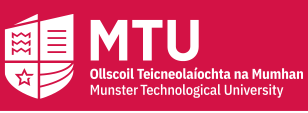Authors
Md Galal Uddin, School of Engineering, University of Galway, Ireland;Ryan Institute, University of Galway, Ireland; MaREI Research Centre, University of Galway, Ireland; Eco-HydroInformatics Research Group (EHIRG), Civil Engineering, University of Galway, Ireland
M M. Shah Porun Rana, The Department of Geography and Environment, Jagannath University, Dhaka, Bangladesh
Mir Talas Mahammad Diganta, School of Engineering, University of Galway, Ireland;Ryan Institute, University of Galway, Ireland; MaREI Research Centre, University of Galway, Ireland; Eco-HydroInformatics Research Group (EHIRG), Civil Engineering, University of Galway, Ireland
Apoorva Bamal, School of Engineering, University of Galway, Ireland;Ryan Institute, University of Galway, Ireland; MaREI Research Centre, University of Galway, Ireland; Eco-HydroInformatics Research Group (EHIRG), Civil Engineering, University of Galway, Ireland
Abdul Majed Sajib, School of Engineering, University of Galway, Ireland;Ryan Institute, University of Galway, Ireland; MaREI Research Centre, University of Galway, Ireland; Eco-HydroInformatics Research Group (EHIRG), Civil Engineering, University of Galway, Ireland
Mohamed Abioui, Geosciences, Environment and Geomatics Laboratory (GEG), Department of Earth Sciences, Faculty of Sciences, Ibnou Zohr University, Agadir, Morocco;MARE-Marine and Environmental Sciences Centre-Sedimentary Geology Group, Department of Earth Sciences, Faculty of Sciences and Technology, University of Coimbra, Coimbra, Portugal;Laboratory for Sustainable Innovation and Applied Research, Universiapolis—International University of Agadir, Agadir, Morocco
Molla Rahman Shaibur, Laboratory of Environmental Chemistry, Department of Environmental Science and Technology, Faculty of Applied Science and Technology, Jashore University of Science and Technology, Jashore, Bangladesh
S M. Ashekuzzaman, Department of Civil, Structural and Environmental Engineering;Sustainable Infrastructure Research & Innovation Group,Munster Technological University, Cork, IrelandFollow
Mohammad Reza Nikoo, Department of Civil and Architectural Engineering, Sultan Qaboos University, Muscat, Oman
Azizur Rahman, School of Computing, Mathematics and Engineering, Charles Sturt University, Wagga Wagga, Australia;The Gulbali Institute of Agriculture, Water and Environment, Charles Sturt University, Wagga Wagga, Australia
Md Moniruzzaman, The Department of Geography and Environment, Jagannath University, Dhaka, Bangladesh
Agnieszka I. Olbert, School of Engineering, University of Galway, Ireland;Ryan Institute, University of Galway, Ireland; MaREI Research Centre, University of Galway, Ireland; Eco-HydroInformatics Research Group (EHIRG), Civil Engineering, University of Galway, Ireland
ORCID
0000-0003-4463-9503
Abstract
Monitoring of groundwater (GW) resources in coastal areas is vital for human needs, agriculture, ecosystems, securing water supply, biodiversity, and environmental sustainability. Although the utilization of water quality index (WQI) models has proven effective in monitoring GW resources, it has faced substantial criticism due to its inconsistent outcomes, prompting the need for more reliable assessment methods. Therefore, this study addressed this concern by employing the data-driven root mean squared (RMS) models to evaluate groundwater quality (GWQ) in the coastal Bhola district near the Bay of Bengal, Bangladesh. To enhance the reliability of the RMS-WQI model, the research incorporated the extreme gradient boosting (XGBoost) machine learning (ML) algorithm. For the assessment of GWQ, the study utilized eleven crucial indicators, including turbidity (TURB), electric conductivity (EC), pH, total dissolved solids (TDS), nitrate (NO3−), ammonium (NH4+), sodium (Na), potassium (K), magnesium (Mg), calcium (Ca), and iron (Fe). In terms of the GW indicators, concentration of K, Ca and Mg exceeded the guideline limit in the collected GW samples. The computed RMS-WQI scores ranged from 54.3 to 72.1, with an average of 65.2, categorizing all sampling sites' GWQ as “fair.” In terms of model reliability, XGBoost demonstrated exceptional sensitivity (R2 = 0.97) in predicting GWQ accurately. Furthermore, the RMS-WQI model exhibited minimal uncertainty (< 1 %) in predicting WQI scores. These findings implied the efficacy of the RMS-WQI model in accurately assessing GWQ in coastal areas, that would ultimately assist regional environmental managers and strategic planners for effective monitoring and sustainable management of coastal GW resources.
Disciplines
Civil and Environmental Engineering
DOI
10.1016/j.heliyon.2024.e33082
Full Publication Date
2024
Award Number 1
University of Galway
Resource Type
journal article
Resource Version
http://purl.org/coar/version/c_970fb48d4fbd8a85
Access Rights
open access
Open Access Route
Gold Open Access
Alternative Identifier
https://www.sciencedirect.com/science/article/pii/S2405844024091138?via%3Dihub#ack0010
Recommended Citation
Uddin, M. G., Shah Porun Rana, M., Mahammad Diganta, M. T., Bamal, A., & Olbert, A. I. (2024). Enhancing groundwater quality assessment in coastal area: A hybrid modelling approach. Heliyon, 10, e33082. https://doi.org/10.1016/j.heliyon.2024.e33082



Publication Details
Heliyon